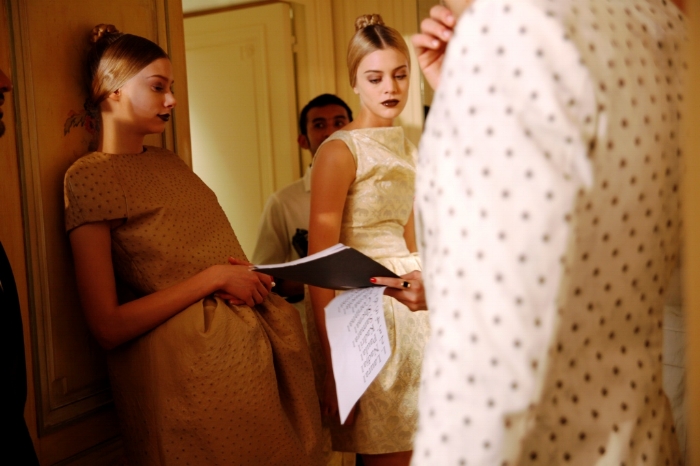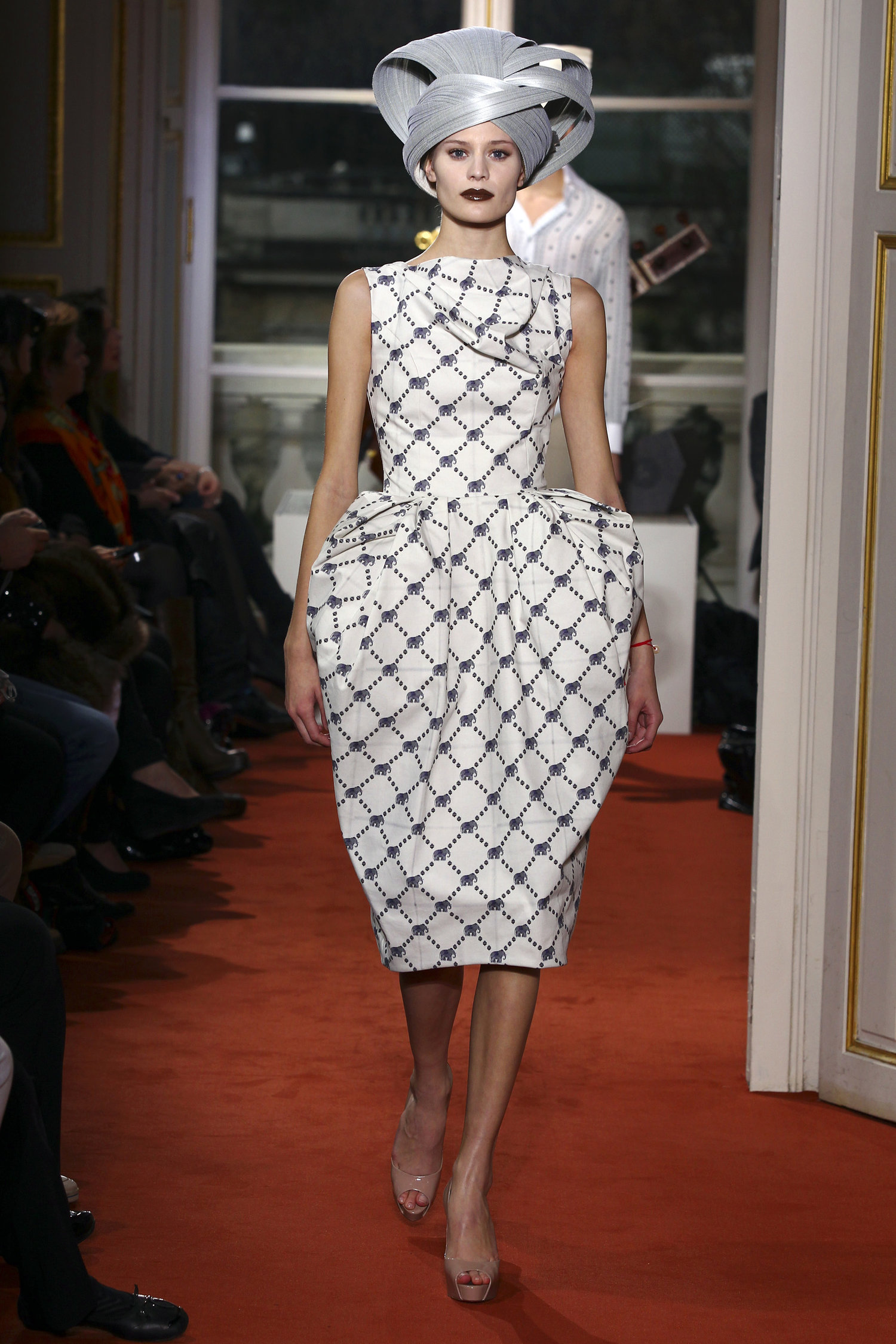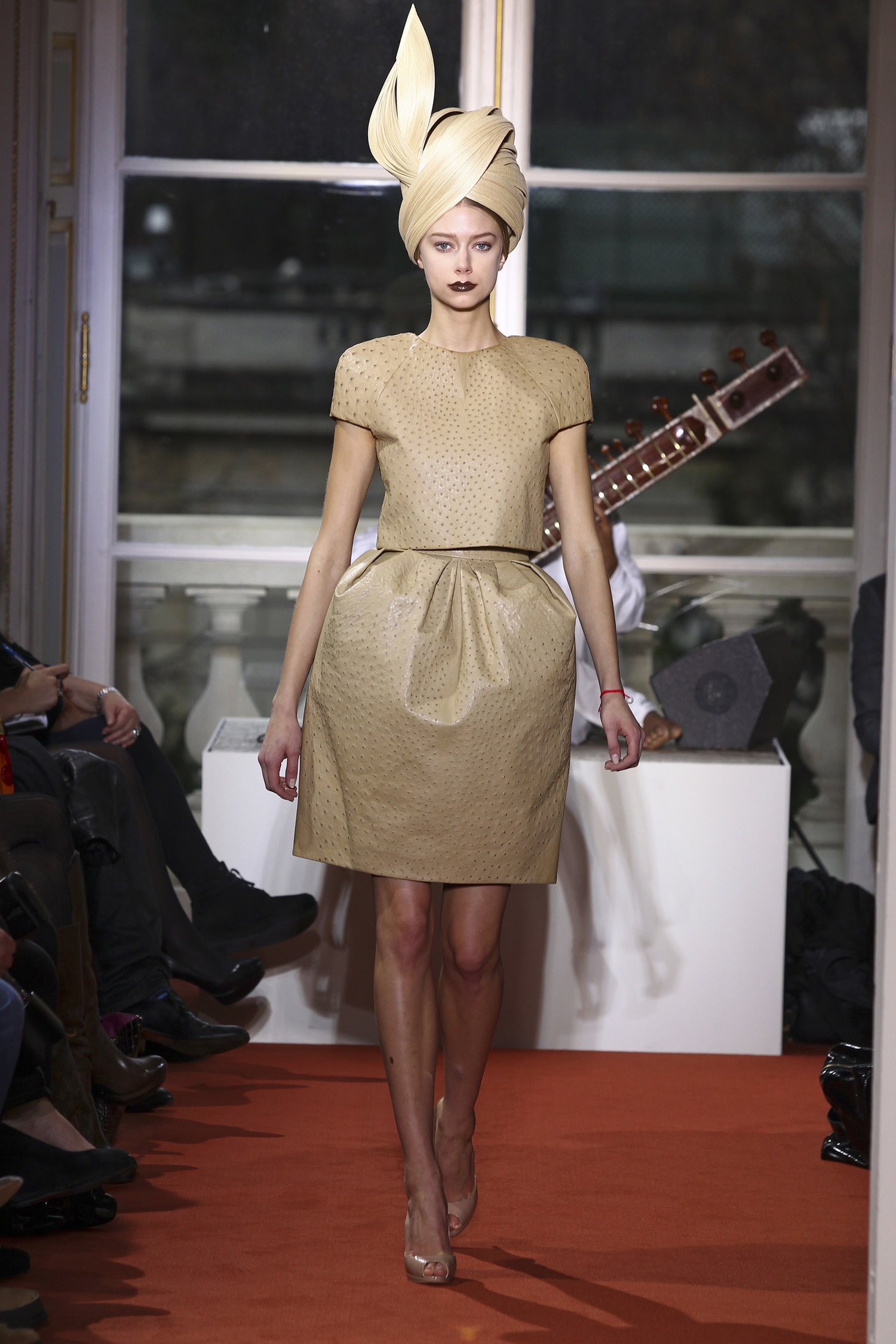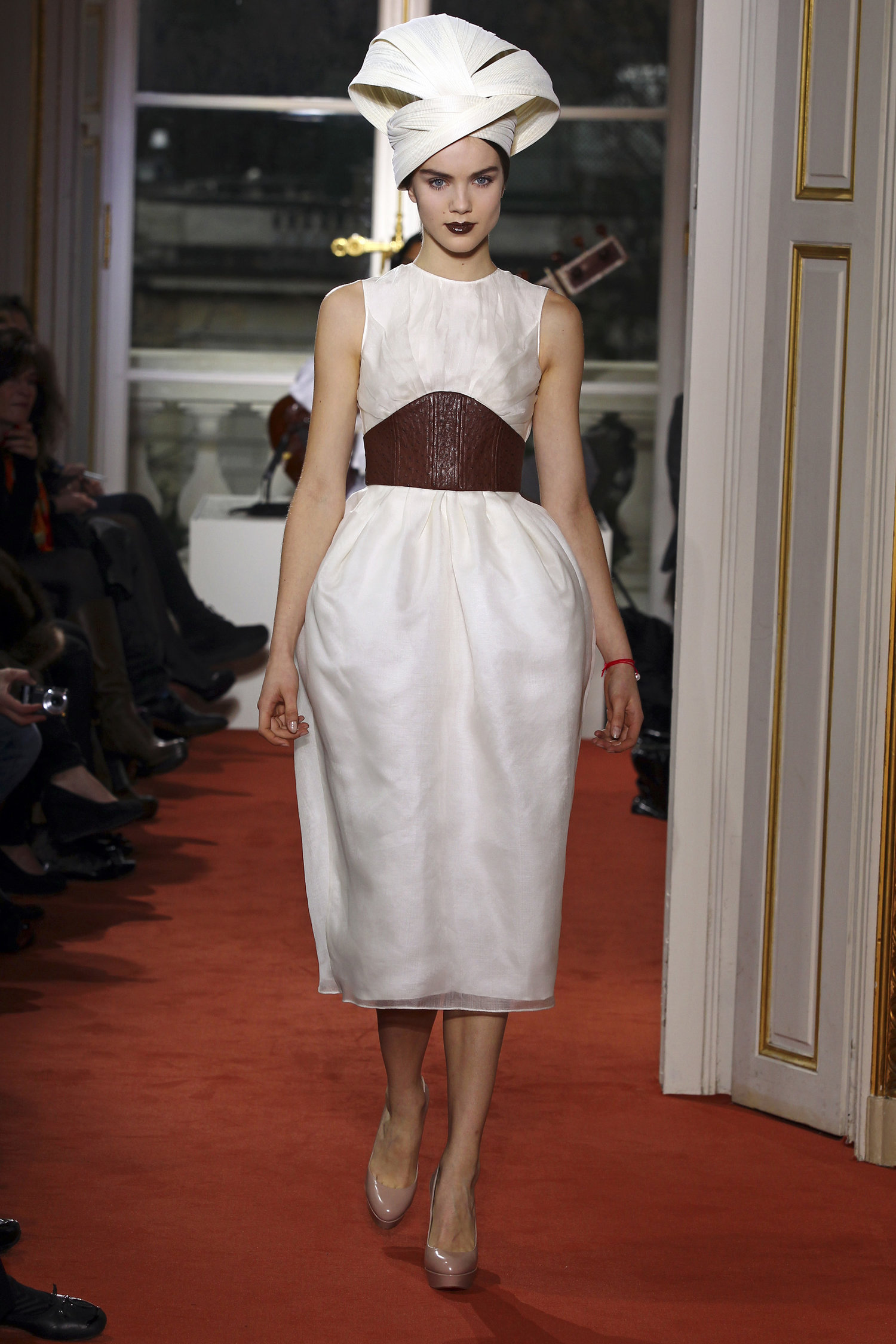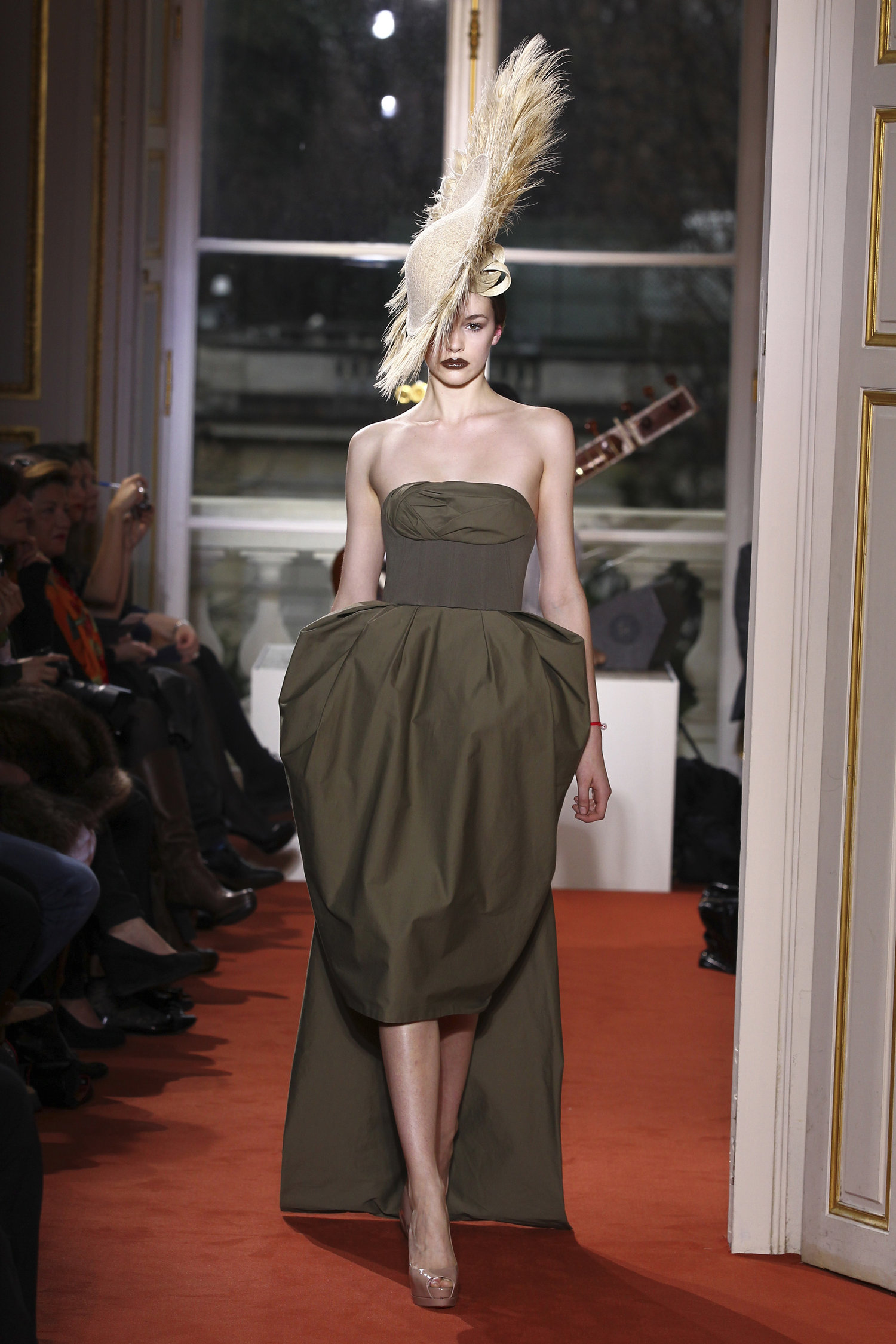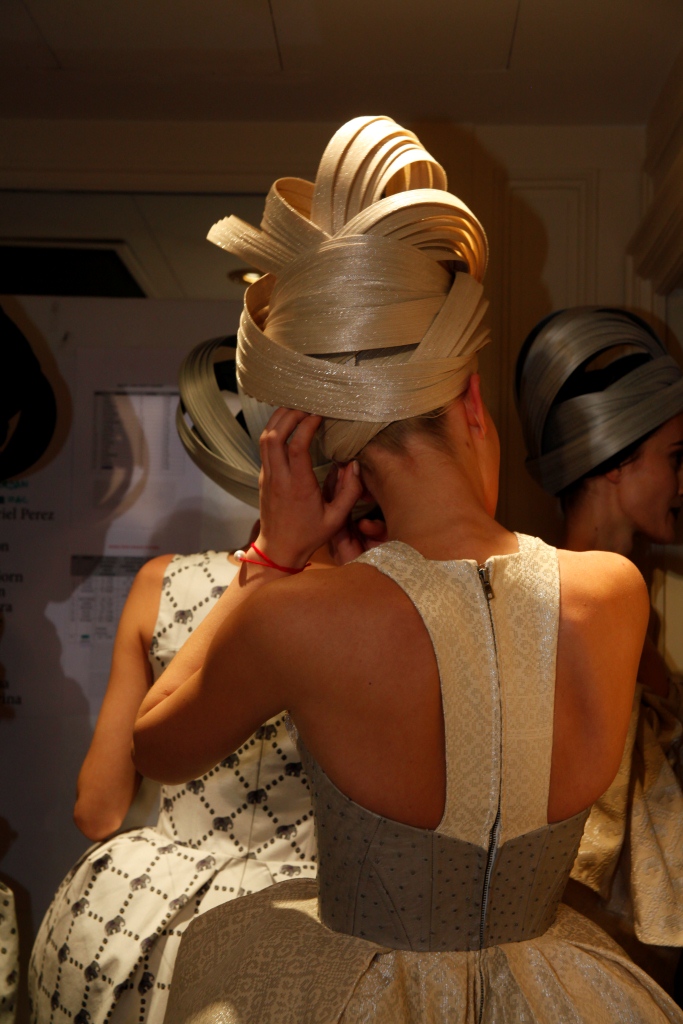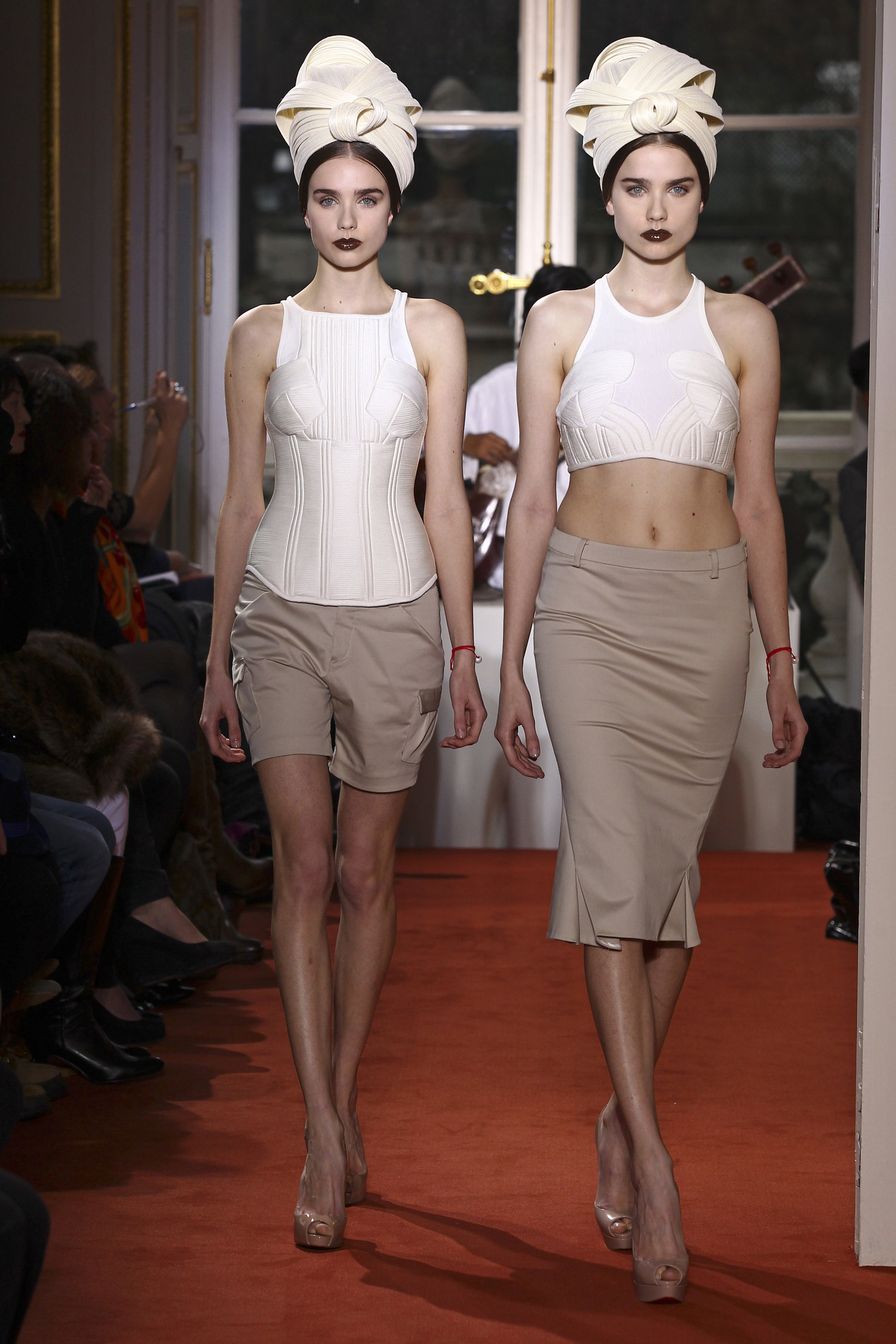An Interview with Didit Hediprasetyo
At only 27 years old, Didit Hediprasetyo is one of the youngest designers to show during Paris Couture Week. He’s also the only one there flying the Indonesian flag. Yet, even though most of his clients are currently mainly based in Indonesia, with a few in Singapore and Japan, Hediprasetyo believes it is important for him to present in Paris, not only for the exposure it gets but also the statement it makes.
“I really think we, Asian designers, need to present internationally to prove that we can create fashion not only for Asians but for a global clientele. Just presenting my work in Indonesia would be too nationalistic and narrow-minded,” he says.
Born and raised in Indonesia, Hediprasetyo graduated from the prestigious Parsons School of Design in Paris in 2007. While he had intended to follow a traditional route in the industry, serving his time at an established couture house to hone his skills, and had his eyes on joining Elie Saab, the initial success of his portfolio collection gave him the confidence to set up his own fashion house much sooner than he might otherwise have done.
“I’d moved back to Jakarta with a plan of staying there for three months and work on a portfolio to get that first job. But my friends started buying my clothes immediately and I never had anything long enough to show. I ended up staying much longer than planned,” he recalled.
In 2009, he came back to Paris with 45 pieces. “At that time, one of my neighbors who was in pubic relations was going to introduce me to Elie Saab, but when she saw how many pieces I had, she suggested I should present them during couture week. It was really one of those gambles, when I thought I’ll do it and then look for a job. But the first collection went very well,” he said.
Hediprasetyo presented his first Spring/Summer 2010 couture show in the salons of the legendary hotel Crillon in January 2010, offering corseted gowns and fitted skirts and shorts in a palette of white, black and gold that emphasized the elegant silhouettes. Since then, the young designer has continued showing at the Hotel de Crillon at each couture season.
For his fourth collection, Spring-Summer 2012, Hediprasetyo took his clients on a voyage to old colonial India and a world of elephant polo.
Models sashayed to the tunes of classical Indian music played live on sitars and barrel hand drums, presenting a mix of elegant casual daywear impeccably cut with structured cocktail dresses whose skirts echo shapes from the 1960s, a period the designer is particularly fond. For the first time, Hediprasetyo also sent down male models, wearing khaki raw cotton jackets worn with brown velvet shorts or riding pants. “I really wanted to include some male design because I felt it was really part of the collection. So, I worked with a tailor. I will continue to have some men’s pieces in the future if the story is right, it’s something that I like to do. But I won’t do it in all collections,” he says.
The collection is not so much about the cultures of India, but a romantic idea of India’s colonial past mixed with the idea of a wandering backpacker, he explains.
Using neutral colors “to illustrate the grounded feeling of India,” Hediprasetyo created the silhouette of a chic traveler, as comfortable on the sidewalks of a cosmopolitan city as on a polo field in Jaipur.
“I’m trying to focus on younger clientele and offer them couture with a modern twist,” he explained, “My ideal woman is someone who is very cultured, who understands the east and west cultures and who appreciates the aesthetic of the old days of couture, but who at the same time doesn’t take it too seriously. She lives in a realistic world. She might be wearing couture going for a coffee with a friend or going to the beach wearing a simple tank top and short.”
With practicality in mind he designed a collection with lot of daywear and little cocktail dresses but very few evening dresses. “That was a conscious decision. I really want to make my couture very realistic,” he said.
The collection opened with a cropped tank top in ivory silk jersey with pleated details on the breast matched with a skirt, followed by another small ivory tank top with paneling details, this time made out of hand woven songket from Palembag.
Seeking to bring cultural Indonesia to an international scene, the young designer has used the rich gilded fabric as a recurring signature fabric in all his collections, though this time more sparsely. “I really like the songket, but I also feel I can’t modernize it too much or it won’t work,” he noted.
The designer continues to offer interesting whimsical prints – such as small jasmine flowers and baby elephants – thanks this time to a collaboration with textile designer Calla Haynes and fellow Parsons alumni illustrator Christophe Lopez-Huici.
Another important collaborator was Philip Treacy, who agreed to create turbans and hats out of vegetable fibre for each of the 41 looks.
Referencing the spirit of exotic adventures, cropped tops, boleros and skirts were cut from dyed ostrich leather, an unusual leather on the catwalk.
In terms of silhouette, the collection, like many others this season, came with accentuated rounded shoulders held in place with heavy boning. There were also asymmetrical necklines a continuous emphasis on the waist with corset-like belts, and cocktail dresses that younger clients might easily wear to a more formal occasion (Look 31) with a long train added at the back to accentuate the drama.
But surprisingly, there were also tightly fitted shorts, a look which the designer admits might raise “some eyebrows” in the world of couture. “I remember in the old days, you could see women wearing Christian Dior in the street of Paris. It would be nice to see that again, not just a bunch of evening dresses,” he quips.
While his couture designs are still only available by order, Hediprasetyo is hoping to start a ready to wear collection in the next 2-3 years.
As Published in Couture by Designaré – Vol 2 (April 2012)
